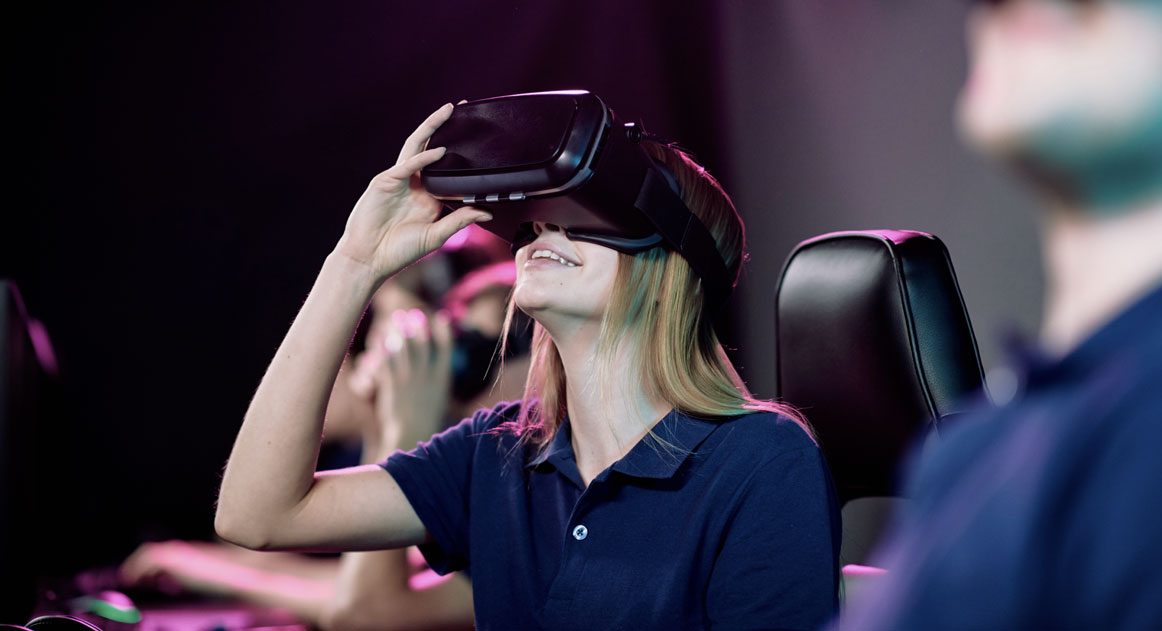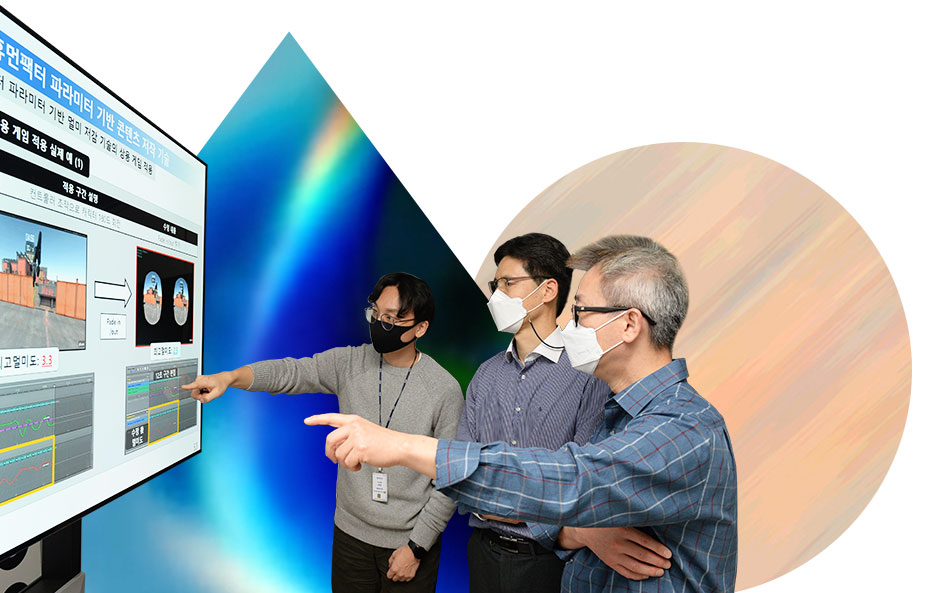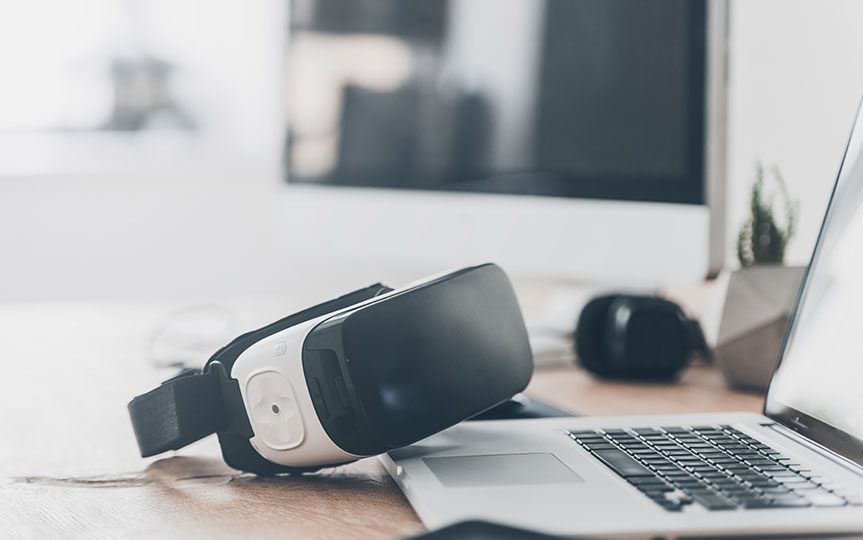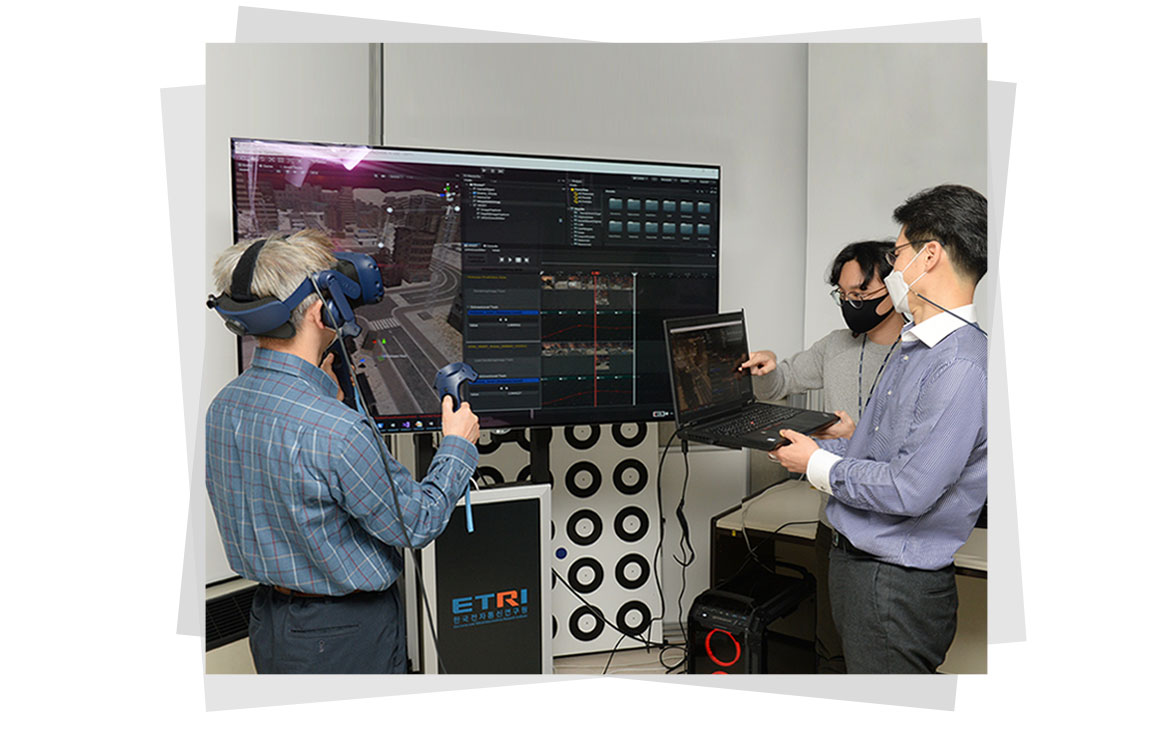VOL. 63 February 2021
ETRI develops VR sickness quantification analysis technology
- Develops technology to make VR games non-dizzying
- The world's first VR sickness analysis and prediction technology secures the international Standard Essential Patent
- Clinical trial database gets published on IEEE with production guidelines

Researchers in Korea have analyzed the symptoms of motion sickness that users may experience in VR content and developed a technology to reduce VR sickness using artificial intelligence. The technology is expected to be of great help to VR content developers in creating various application services while giving free rein to their creativity.
Electronics and Telecommunications Research Institute (ETRI) announced on the 26th that it has succeeded in developing a software technology that can accurately predict the level of VR sickness based on artificial intelligence technology.
While VR technology is expanding to various fields such as education, entertainment and sports, a VR headset such as head-mounted display (HMD) worn to increase the sense of immersion for an extended time often causes nausea, vomiting and dizziness among some users; thus hindering the commercialization and widespread adoption of VR technology.

Nonetheless, it was difficult to find the definite cause of and solution to VR sickness as there are many factors related to its occurrence. In particular, it was challenging to conduct systematic analysis to clarify the quantitative correlation between the factors causing VR sickness.
ETRI developed a technology for deriving the correlation between VR elements and VR sickness by obtaining experimental data from more than 500 users and applying machine learning. What makes this research even more significant is that it utilized experiential data reflecting individual characteristics on a large scale, taking into account the large gap in the level of VR sickness experienced by each user.
The “VR Human Factor-based VR sickness analysis and monitoring tool” developed by the research team is a learning engine software that collects bio-signals1) from users and predicts VR sickness with artificial intelligence. In other words, it is a technology that analyzes the types of VR sickness experienced by each individual through biomarker2) pattern detection.
This technology is used in the healthcare field as SW connected to a portable bio-signal acquisition device for psychological and mental analysis. In particular, it is mounted on “Meddiction-S,” a VR-based alcohol addiction treatment device from Meddiction Inc., slated to undergo the approval and review procedure for medical devices.
As another technology developed by the researchers, 『VR sickness reduction content authoring tool』 enables the real-time adjustment of VR elements during the content production process; thus reducing sickness easily.
1) 8 EEG channels, 1 PPG channel, 1 GSR channel, etc.
2) Feature data converted from bio-signal information for easier analysis

Previously, when developing VR content, intermediate verification was repeated and factors that might affect sickness were manually adjusted; this required subjective judgment and required a lot of time and money.
However, this tool can objectively adjust the content ranging from level 1 to 5 based on quantitative indicators. It is readily compatible with the Unity3) game engine widely used in general game development. Intuitive, real-time editing4) of sickness-causing factors is expected to increase the convenience of development further.
Commercial VR games using ETRI technology have also been released.
“Special Force VR: INVASION” by Dragonfly Co., Ltd., which joined as a joint research institute, has been applied with the research team's VR sickness reduction content authoring tool to reduce sickness in game play significantly and released in domestic and international markets since 2019.
The researchers also developed a 『VR human factor-based motion data editing tool』 that can analyze and reduce VR sickness in an interactive VR device. This technology can reduce motion sickness by automatically adjusting or editing content while interpreting and utilizing the difference in the amount of information between VR images and user actions as an entropy5). It will be primarily applied to interactive ride-on toys or used for VR sickness and safety analysis.
This achievement is based on the research project of hi-tech convergence with digital content technology development6) by the Ministry of Science and ICT. In particular, it was selected as one of the top 100 national R&D projects in 2020, greenlighting the wider adoption of VR technology.
3) The game engine that provides a development environment for 3D and 2D video games.
4) Easily transform various elements such as camera movement, object movement, field of view, image complexity, etc. into property types on the Unity window
5) A state function used to describe the flow of energy
6) Project name: Development of human-factor parameter control technology for VR sickness reduction (linked to standardization) (Supported by the Ministry of Science and ICT, March 2017~December 2019)

"We will try to promote the commercialization of VR technology in various fields such as high-level job training, mental illness treatment, medical simulation, etc. using the world's first developed VR sickness analysis and prediction technology,” Dr. Wook-Ho Son of ETRI's CG/Vision Lab said.
Until now, ETRI has been making great efforts to establish international standards related to VR technology. In particular, as a result of its participation as an editor in the Working Group under the IEEE Standards Association (SA)7) and leading of related work, the current draft of international standards was finally approved and will be published early next year. Technologies such as VR sickness reduction API and VR sickness analysis and prediction method developed by ETRI have become the international Standard Essential Patent.
ETRI has globally disclosed through IEEE the VR sickness clinical trial database, the core basic data of this international standards-setting technology, as well as the developed VR sickness prediction module in the form of an executable file through the Korea VR/AR Industry Association (KoVRA), which is expected to contribute to the development of the VR research ecosystem.
The researchers previously unveiled the 「Guidelines for VR Use and Production Safety」, which contain guidelines for the application development of VR sickness reduction, for the first time in Korea in 2017.
ETRI plans to carry out follow-up research to develop VR effectiveness measurement and verification technology for verifying the effectiveness of VR use while promoting the developed technology overseas and transferring related technologies.
7) Working Group P3079

